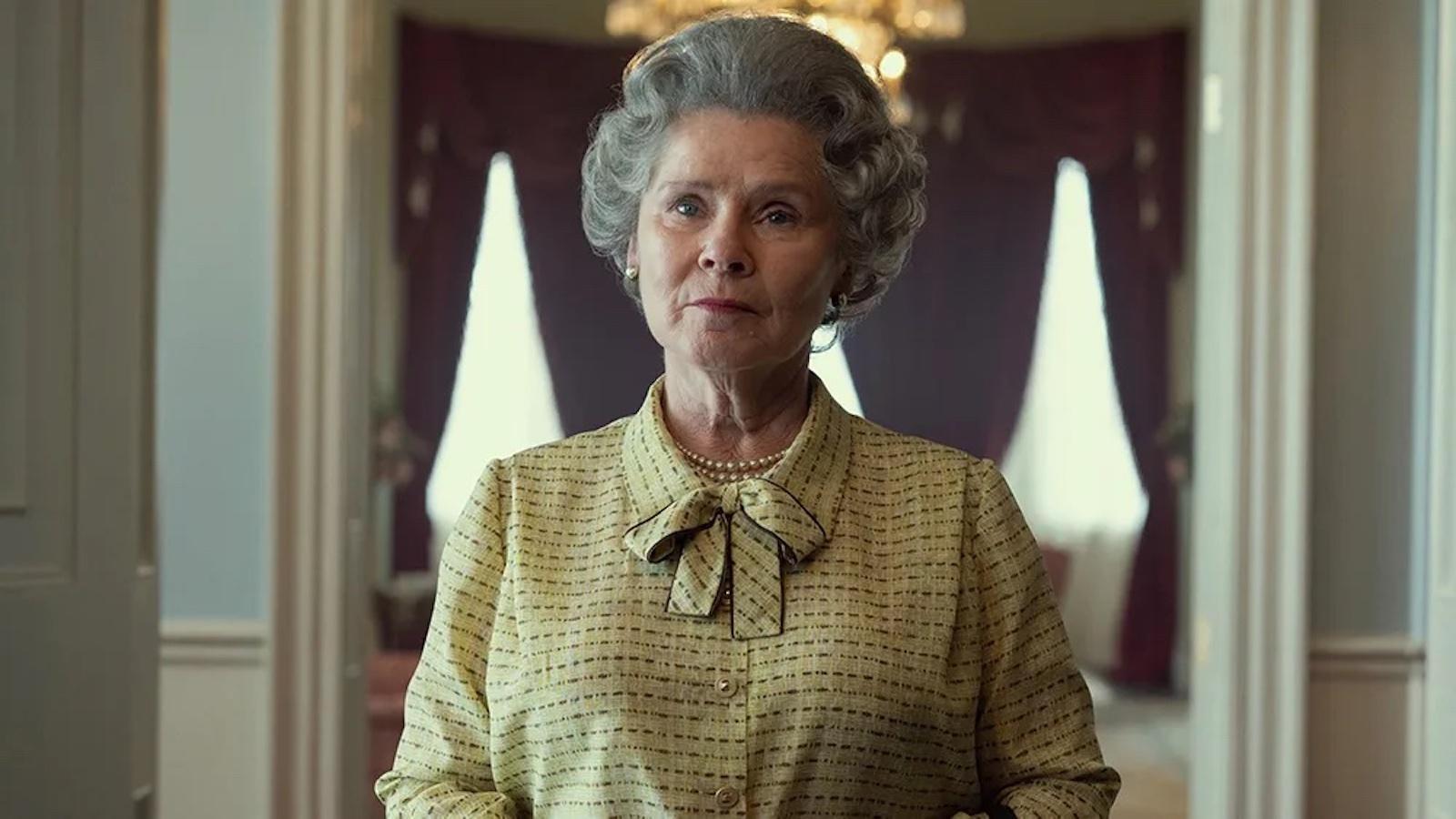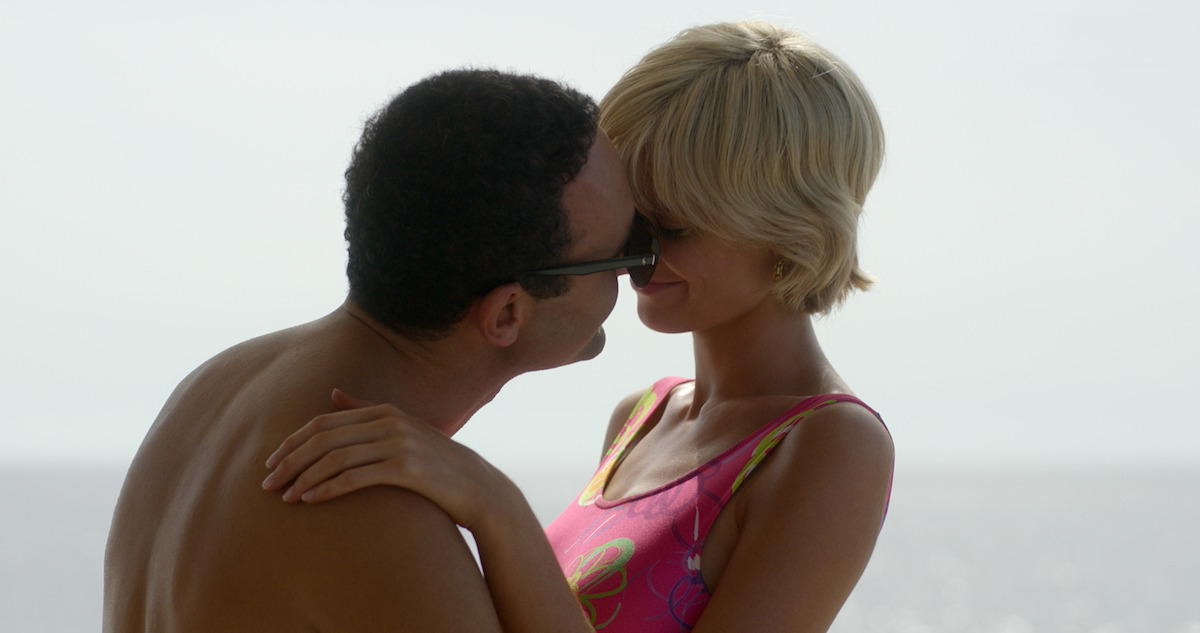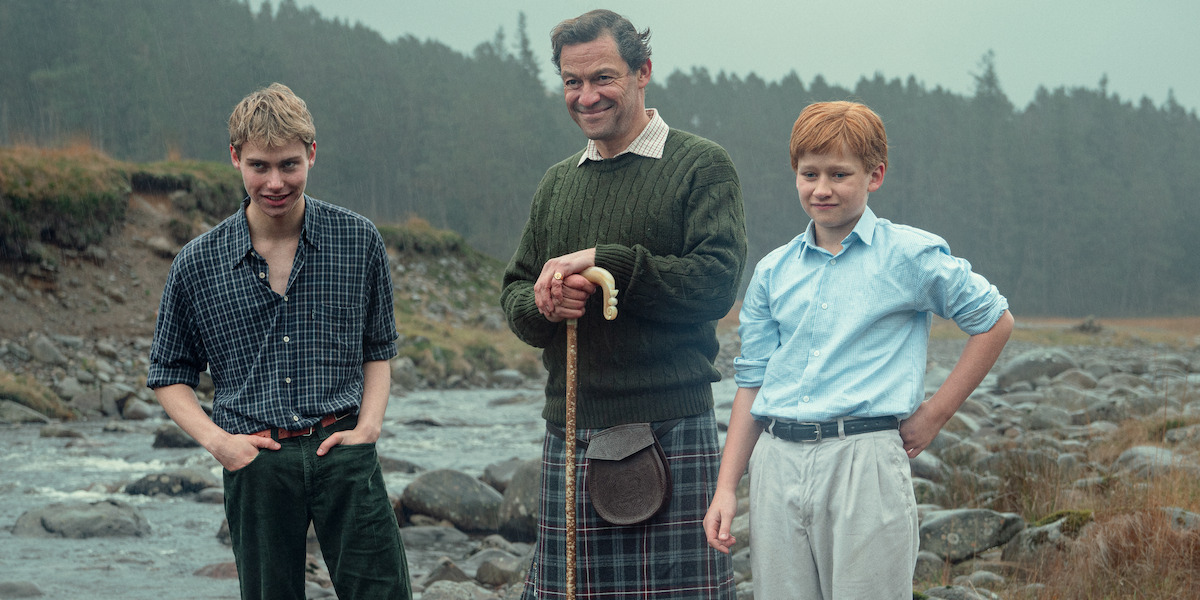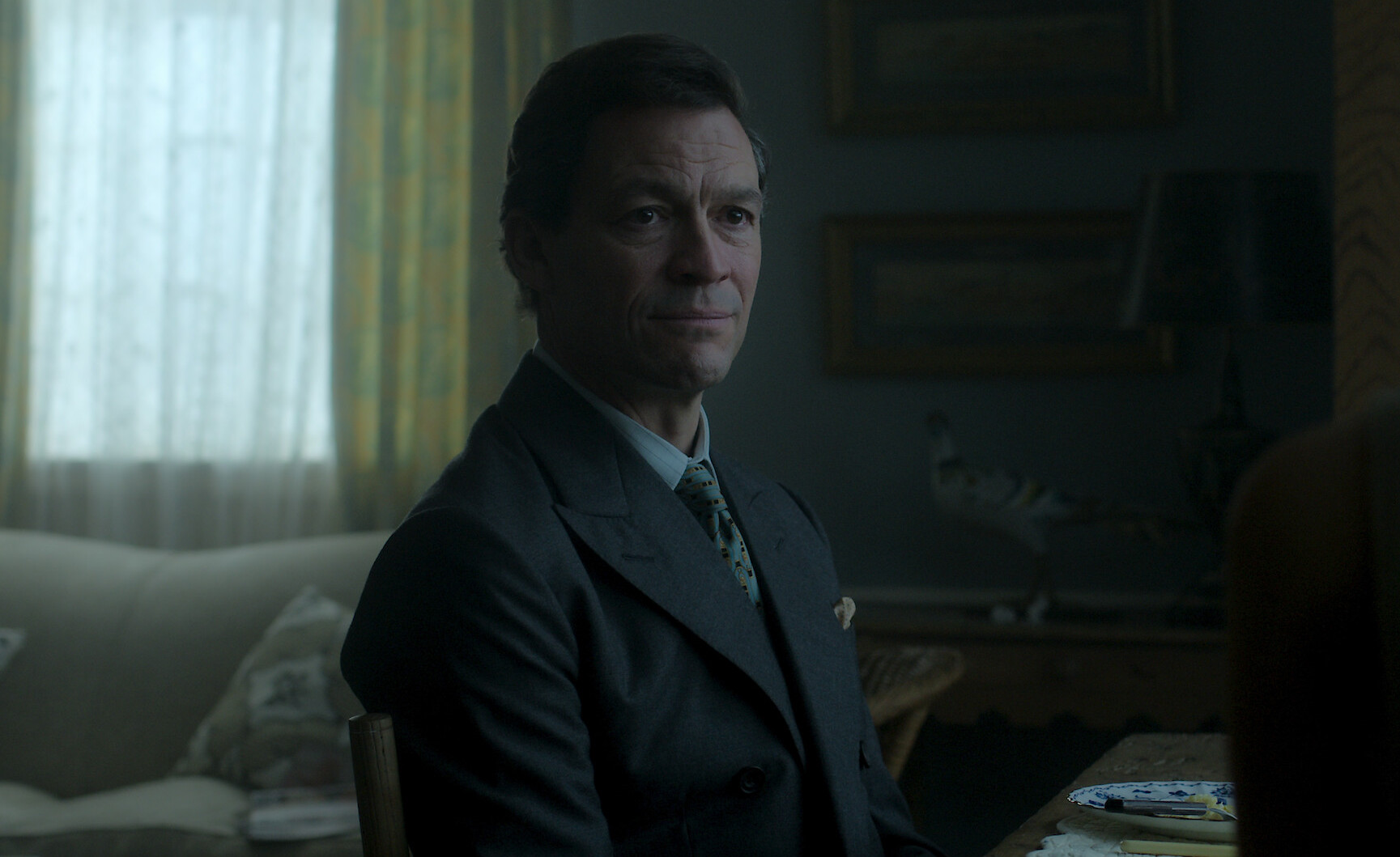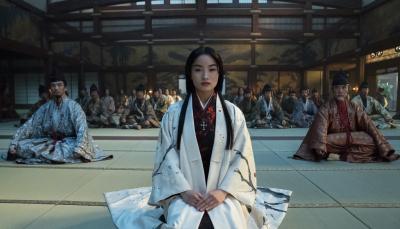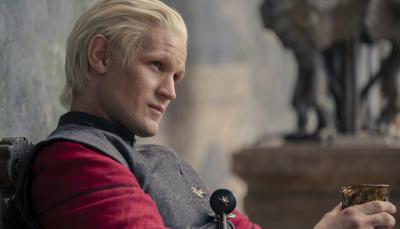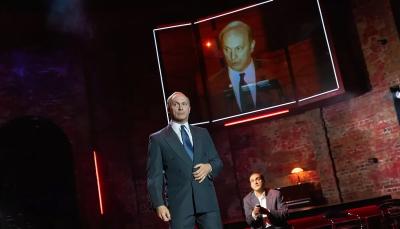'The Crown' Season 6, Part 1 is Sad for All the Wrong Reasons

Princess Diana (Elizabeth Debicki) with her adored sons William (Rufus Kampa) and Harry (Fflyn Edwards).
Credit: Netflix
Netflix’s The Crown is back for its sixth and final season, split into two parts for reasons Netflix refuses to explain. Whether it’s the material or an overly sensitive approach following the death of Queen Elizabeth II, the first half of the final season (four episodes in all) lacks the qualities of great dialogue, wit, and intelligence, that made the first five series such a pleasure (albeit a guilty one) to watch. The attempts to jazz up the increasingly recent history with new, fictional insights is a losing proposition, even in the hands of series creator Peter Morgan. The talented cast, including its lead, doesn’t have much to do. Footage of actual events, like the weeping crowd laying flowers outside Buckingham Palace or the funeral cortege, retain their power and sap the impact of the fictional embroidery.
Elizabeth: “One would almost feel sorry for her if one weren’t so cross with her.”
These four episodes are all about the lead-up and immediate aftermath of Princess Diana’s death and the repercussions on the Royal Family and the country. As has been the plan since the series was conceived a decade ago, the final set of castings from Season 5 return mostly return. As Prince Charles, Dominic West does his best to look homely but fails, and Jonathan Pryce’s impersonation of a much taller man in Prince Philip continues. A cigarette holder is attached permanently to Lesley Manville to represent Princess Margaret, who sadly still has little to say. Claudia Harrison’s Princess Anne still lacks the posh snark of her predecessor, Erin Doherty, or even the lines to express it.
Perhaps most frustratingly, Imelda Staunton, underused as Queen Elizabeth, drifts around in the twilight world of various royal palaces, uttering the occasional platitude. Only Elizabeth Debicki as Diana is given something to do with her role, although the generally appalling dialog she’s given limits what that is.
The season starts when Charles and Diana have been separated for five years and divorced for one, a.k.a. the spring of 1997. The Queen and Philip consider her persona non grata (the title of the first episode). She’s no longer a royal, but, as the Windsors realize too late, she has the freedom to forge her own path, and because she’s the mother of the king after next, it can’t be ignored. Essentially, they are stuck with her and can’t do anything about it. The Queen is leaning toward proposing a truce, but Philip ends that and refuses to give official royal acknowledgment of Diana’s work in banning landmines. (He lacks the politically incorrect playfulness of earlier seasons and just gripes at everything.)
In an improbable scenario, Charles, after his sons have had a playdate with Prime Minister Tony Blair’s family (Bertie Carvel), suggests he and Diana nurture a kinder, gentler relationship as co-parents and friends. It’s so modern and reasonable and non-royal! But Charles has an agenda: the rehabilitation of Camilla Parker-Bowles (Olivia Williams), with whom he’s had an affair for years. He’s offended when the Queen refuses to come to the birthday party he throws for her. Margaret, the eternal party animal, is the only one who attends.
Charles consults his spin doctor Mark Bolland (Ben Lloyd-Hughes) for advice on getting positive press coverage, forcing the Royals to be dragged into the 20th century with a website, unveiled by the Queen’s secretary Robert Fellowes (Andrew Havill), who then has to explain to his elderly, non-tech audience at a Palace meeting what it’s for. (It’s dial-up! Hear that screeching sound and experience the nostalgia you won’t get anywhere else in these episodes). However, these tentative steps to “seize the narrative” are too late. A new breed of photographer is emerging with a different set of rules. The hordes of paparazzi who swarm around Diana, represented by Mario Brenna (Enzo Cilenti), regard themselves as hunters of celebrities.
Diana takes her sons on holiday, accepting an invitation from an old friend, entrepreneur Mohamed Al-Fayed (Salim Daw), whose yacht is anchored at St. Tropez. Boatloads of paparazzi swarm around while she’s there. But Mohamed has a surprise in store with the presence of his son Dodi (Khalid Abdalla) and an agenda of his own. If Dodi marries Diana and acquires British citizenship, the Fayed business, already huge, could go through the roof, and he could get that royal family sheen he's always coveted. Dodi’s a bit of a mess, shy, romantic, and nerdy. Diana’s sons refer to him as “the poser” and make jokes about his shoes; Diana assures them she won’t marry him. (Her behavior would indicate otherwise.)
Mohamed, chewing the scenery and behaving like a gleeful vaudeville villain, masterminds the whole affair... or so the series seems to claim. Dodi has an American fiancé, Kelly Fisher (Erin Richards), who’s about to visit him, and a wedding to take place in three weeks. (Awkward!) Fortunately, the Fayeds brought along the spare yacht (as one does!), where Kelly stays for a very short, cross visit before suing Dodi when he inevitably breaks off the engagement. After packing William and Harry off to Balmoral for the rest of the summer, Diana returns to the yacht, and Dodi’s wooing resumes. Killer photographer Mario Brenna takes a boat out to the yacht and photographs the couple kissing. The resulting pictures are used in an 11-page spread in the Sunday Mirror and are seen all over the world. The result is that when Diana goes to Bosnia to promote her work for a global landmine ban, her press conference is dominated by questions about Dodi, undermining her real accomplishments.
Charles’s spin doctor Mark suggests wholesome publicity shots of Charles with his sons in Scotland in bracing fresh air to counteract the family's embarrassment. The photographer is gentlemanly Duncan Muir (Forbes Masson), who adores the Queen and photographs her at Balmoral, in between portrait work of kilted Scottish gentry. The two boys are not happy about their photo session, turning away from the camera, wandering about, and embarrassed by the whole scenario and their father in a kilt. The young actors, Rufus Kampa as Will and Fflyn Edwards as Harry, are terrific, as are their teenage counterparts, Ed McVey and Luther Ford, respectively.
Mohamed promises Dodi a co-share of the business if/when he closes the Diana deal. Dodi found a ring he liked (big, gold, diamonds, ostentatious), but it’s only available at the Paris branch. Diana agrees to a detour to Paris before flying back to England. It’s fairly disastrous, with journalists chasing them from one destination to another in Paris while Dodi tries to find the perfect paparazzi-free proposal spot. (It may remind you of one of those dreams where you are desperate for a bathroom, and they all have glass walls or some other obstacle.) Finally, Dodi gets the Julio Iglesias CD all cued up, drops to one knee, pops the question, and Diana responds by dropping the flirty, compliant act and refuses. Dodi attempts to save face by “defying his father on the phone,” but he’s talking to dead air, and Diana knows it. Everything about the scene is deeply uncomfortable, made more so by knowing what comes next.
We don’t see a simulation of the crash or Diana’s body, thank goodness.
In Scotland, the phone rings, and Charles, the Queen, and Philip bicker about protocol for returning the body. Charles is suddenly the grieving husband, demanding the Palace do all the right things, protocol be damned, full honors, royal transport, an utterly nonsensical fantasy, considering he, like everyone else, no longer considers her a royal. (Philip is given the role of objecting.) With great solemnity, Charles declares they should not wake the boys (it’s the middle of the night), a scene that’s supposed to show how much he’s learned from his own mother’s inability to parent, but it just comes off as so much dithering idiocy. Worse, the scene where Charles finally tells his sons about Diana’s death lacks any emotional punch. He then flies to France to collect Diana’s body, and guess who pops up? Diana, looking good, girl! She thanks him for being “so raw, broken, and handsome,” whatever that means.
Diana also appears to the Queen, who tells her, “You’ve finally succeeded in turning me and this house upside down.” I think it’s meant to be a reconciliation. Dodi’s ghost also visits his father, and Mahomed, distraught at his loss, tells him how deeply hurt he is by the royal family’s deafening silence. He wants to have a silver plate engraved with a poem Dodi wrote for her put in Diana’s coffin. It’s a rare moment of genuine emotion in an otherwise mawkish and gloomy episode. Another great moment (and it is a very short scene) is when Harry addresses the envelope for the card that is to lie on the wreath atop his mother’s coffin.
As Charles tries to persuade his parents to return to London, William goes missing for fourteen hours to grieve alone, which is described as “behaving out of character,” i.e., acting like a normal person or just about everyone else in the country. In London, we see the familiar news footage of the mountain of flowers outside the palace gates and the heartbroken ordinary people. The Queen spends what appears to be many hours writing a short, careful speech; Staunton is uncannily convincing in its delivery.
For its first five seasons, The Crown was entertaining and intriguing, avoiding both excessive sentimentality and silliness, and the acting was great. Did the death of the Queen (which actually took place during the filming) and the succession of Charles to the throne dampen the creativity of the series? Because so far, Season 6 of The Crown plays it safe, and worse, plays it badly. The remaining six episodes will be released on December 14, 2023. Let’s hope it gets better.

